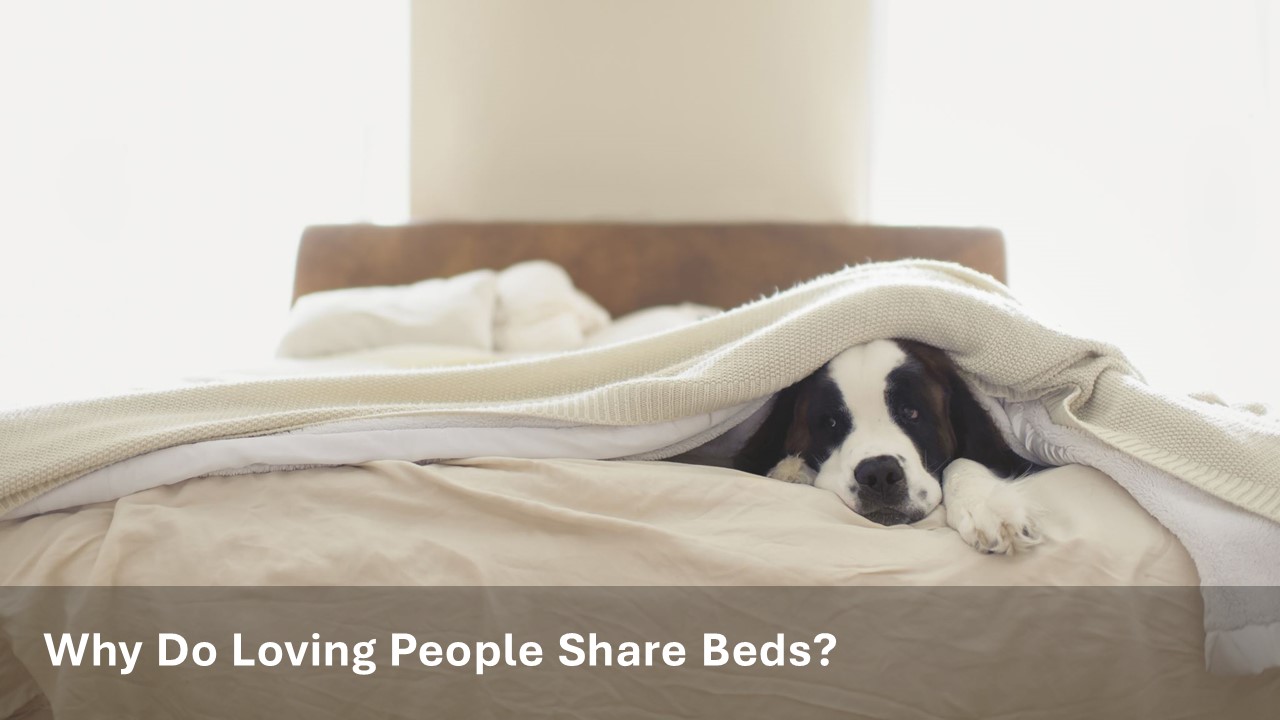People loving each other often sleep together. Many social animals and humans live in groups and sleep together in groups, families, or in pairs. Why is that?
Such co-sleeping could be evolutionarily beneficial in several regards, both physiologically, providing warm temperatures for survival, and psychologically, providing a feeling of unity.
Evolution of Co-Sleeping
Among social animals, sleeping together is quite common and beneficial. Recent research has shown that the presence of other animals in vicinity affects sleep-related physiological functions. For instance, mice are capable of synchronizing their rapid eye movement cycles, whereas olive baboons exhibit reduced sleep duration with larger group sizes (Chakravarty et al., 2024).
In many cultures, co-sleeping between infants and their caregivers is common; in some parts of South America, Asia, and Africa, rates range from 60 to 100 percent, while in Western societies, the prevalence is lower (Mindell et al., 2010; 2013; 2014).
In another article, I reviewed the developmental benefits and downsides of children’s co-sleeping with caregivers and modern co-sleeping practices across world cultures.
Co-Sleeping Is Often Associated with Love
Throughout cultures, sleeping together and eating together were the indicators of intimacy and love in relationships (de Munck & Korotayev, 2007; De Munck, Korotayev, & McGreevey, 2016). Many people in modern Western societies anticipate sleeping with their spouse or romantic partner, yet some prefer to sleep alone (Mindell et al., 2010).
Sharing a bed with someone is often associated with attachment, affection, commitment, and love. Close relationships and love involve feelings of warmth, sensitive touch, embracing another body, and sleeping in bed together—all things that a person feels in intimate contact. Loving partners’ sleeping proximity and physical bodily contact imply physical and psychological intimacy (de Munck & Korotayev, 2007).
The Practice of Sharing Beds among Adults
The practices of bedsharing among adults have evolved over time from pre-industrial communal arrangements (Ekirch, 2001) including whole families and other household guests, to pair-bonding co-sleeping of romantic partners and spouses (Rosenblatt, 2012), to solo sleeping in response to hygiene concerns as germ theory became accepted (Hinds, 2010).
Over time, adult bedsharing has changed from pre-industrial communal arrangements that included whole families and other house guests to sleeping alone because of concerns about hygiene as germ theory became more popular.
The American National Sleep Foundation administered a survey in 2018. Researchers found that 80–89% of adults who live with their partner share a bed. What does this practice of love give us?
Research has shown that sharing a bed with your partner can help you sleep longer and feel more rested. Sharing a bed with your partner can make you feel closer to each other (Drews et al., 2017; Pankhurst & Home, 1994; Rosenblatt, 2012).
Partners who share a bed often find themselves in sync with each other’s sleep stages. This can really boost that sense of intimacy. However, not everything is as simple as it seems. Some studies suggest that women in heterosexual relationships might have a tougher time with sleep quality when sharing a bed, since they can be more easily disturbed by their partner’s movements. Interestingly, people who share a bed might actually experience less deep sleep compared to when they sleep solo, even if they think their sleep is better when they’re together (Dittami et al., 2007; Drews et al., 2020 Richter et al, 2016).
We should remember that co-sleeping or alone-sleeping patterns can still be individual, cultural, or cross-cultural universal.
References
Chakravarty, P., Ashbury, A. M., Strandburg-Peshkin, A., Iffelsberger, J., Goldshtein, A., Schuppli, C., … & Crofoot, M. C. (2024). The sociality of sleep in animal groups. Trends in Ecology & Evolution.
Dittami, J., Keckeis, M., Machatschke, I., Katina, S., Zeitlhofer, J., & Kloesch, G. (2007). Sex differences in the reactions to sleeping in pairs versus sleeping alone in humans. Sleep and Biological Rhythms, 5, 271-276.
Drews, H. J., Wallot, S., Weinhold, S. L., Mitkidis, P., Baier, P. C., Roepstorff, A., & Göder, R. (2017). “Are we in sync with each other?” Exploring the effects of co-sleeping on heterosexual couples’ sleep using simultaneous polysomnography: A pilot study. Sleep Disorders, 2017(1), 8140672.
Drews, H. J., Wallot, S., Brysch, P., Berger-Johannsen, H., Weinhold, S. L., Mitkidis, P., … & Göder, R. (2020). Bed-sharing in couples is associated with increased and stabilized REM sleep and sleep-stage synchronization. Frontiers in Psychiatry, 11, 583.
Ekirch, A. R. (2001). Sleep we have lost: pre-industrial slumber in the British Isles. The American Historical Review, 106(2), 343-386.
Hinds, H. (2010). Together and apart: Twin beds, domestic hygiene and modern marriage, 1890–1945. Journal of Design History, 23(3), 275-304.
Mindell, J. A., Sadeh, A., Wiegand, B., How, T. H., & Goh, D. Y. (2010). Cross-cultural differences in infant and toddler sleep. Sleep Medicine, 11(3), 274-280.
Mindell, J. A., Sadeh, A., Kwon, R., & Goh, D. Y. (2013). Cross-cultural differences in the sleep of preschool children. Sleep Medicine, 14(12), 1283-1289.
Mindell, J. A., Sadeh, A., Kwon, R., & Goh, D. Y. T. (2014). “Cross-cultural differences in the sleep of preschool children”: Corrigendum. Sleep Medicine, 15(12), 1595–1596.
De Munck, V. C., & Korotayev, A. V. (2007). Wife–husband intimacy and female status in cross-cultural perspective. Cross-Cultural Research, 41(4), 307-335.
De Munck, V., Korotayev, A. & McGreevey, J. (2016). Romantic love and family organization: A case for romantic love as a biosocial universal. Evolutionary Psychology, 14 (4), 1–13. doi:10.1177/ 1474704916674211
Pankhurst, F. P., & Home, J. A. (1994). The influence of bed partners on movement during sleep. Sleep, 17(4), 308-315.
Richter, K., Adam, S., Geiss, L., Peter, L., & Niklewski, G. (2016). Two in a bed: The influence of couple sleeping and chronotypes on relationship and sleep. An overview. Chronobiology International, 33(10), 1464-1472.
Rosenblatt, P. C. (2012). Two in a bed: The social system of couple bed sharing. State University of New York Press.
